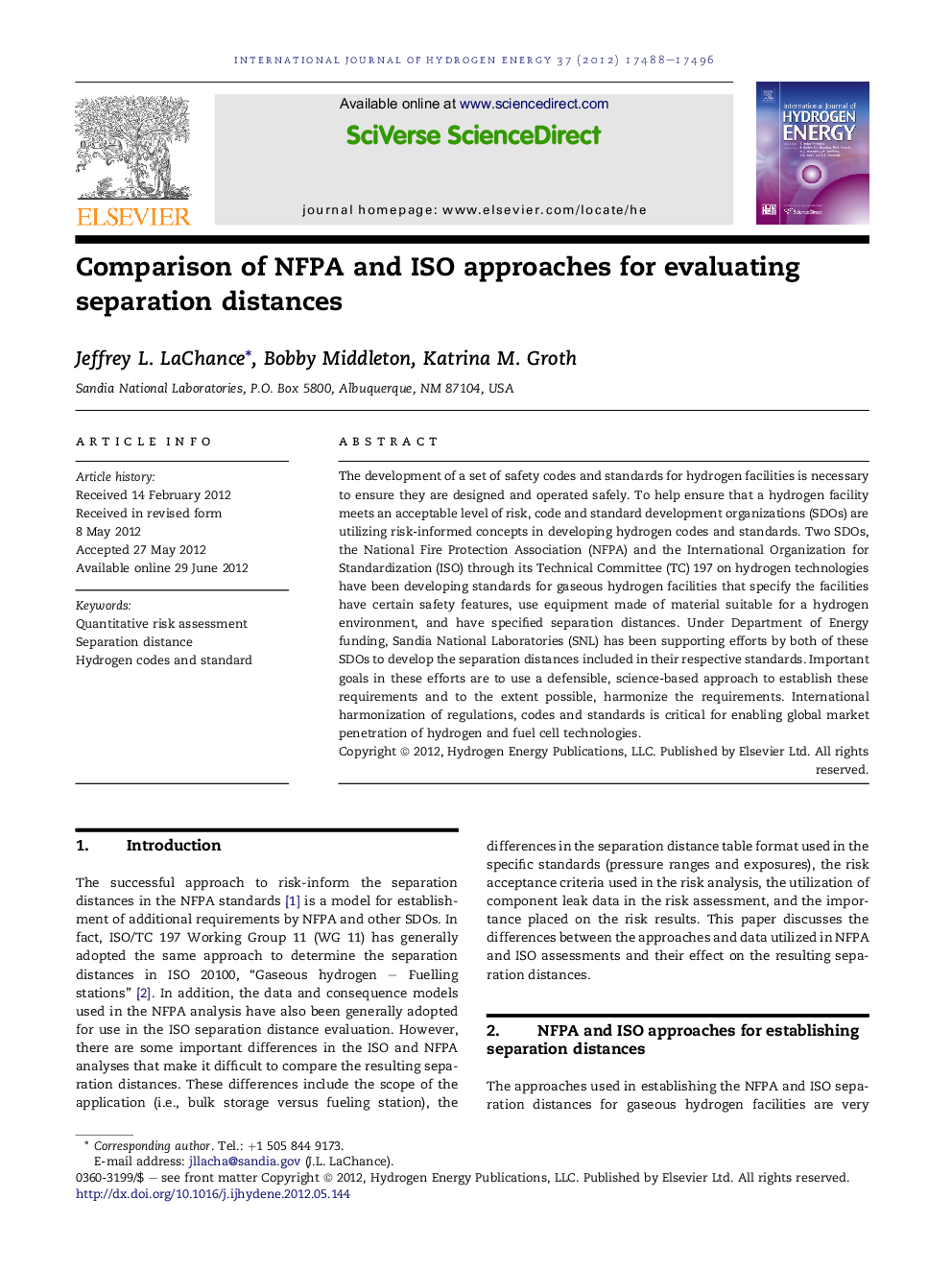| Article ID | Journal | Published Year | Pages | File Type |
|---|---|---|---|---|
| 1270935 | International Journal of Hydrogen Energy | 2012 | 9 Pages |
The development of a set of safety codes and standards for hydrogen facilities is necessary to ensure they are designed and operated safely. To help ensure that a hydrogen facility meets an acceptable level of risk, code and standard development organizations (SDOs) are utilizing risk-informed concepts in developing hydrogen codes and standards. Two SDOs, the National Fire Protection Association (NFPA) and the International Organization for Standardization (ISO) through its Technical Committee (TC) 197 on hydrogen technologies have been developing standards for gaseous hydrogen facilities that specify the facilities have certain safety features, use equipment made of material suitable for a hydrogen environment, and have specified separation distances. Under Department of Energy funding, Sandia National Laboratories (SNL) has been supporting efforts by both of these SDOs to develop the separation distances included in their respective standards. Important goals in these efforts are to use a defensible, science-based approach to establish these requirements and to the extent possible, harmonize the requirements. International harmonization of regulations, codes and standards is critical for enabling global market penetration of hydrogen and fuel cell technologies.
► Approach used to risk-inform separation distances in two H2 standards are compared. ► Differences in data, methodology, and separation distance format are presented. ► Differences in key parameters used in the NFPA and ISO analyses were evaluated.
